#le marcassin
Text
Tous à la plage ! ⛱️ 🐗
En Corse, les marcassins sont les bienvenus 🤗
👋 Bel après-midi
#funny video#tous à la plage#cute animals#corse#marcassin#sangliers#funny wild boar#cute boar#humour#plage#mer#sea#partage#bel après-midi#fidjie fidjie
78 notes
·
View notes
Text
Seasonal theme: Magical summer (beginning)
This summer will be a season of wonders and enchantments, of spells and wizards - a magical summer!
Here is a list of beings, entities, objects and concepts you can check out if you want to add some magic to your summer:
In the myths, legends and so-called “real” world...
In the Arthurian literature: Merlin the enchanter, most famous of all wizards, derived from the legendary Welsh figure of Myrddin. Morgan le Fay, the ever-so-ambiguous enchantress of Arthurian mythos. Excalibur, the greatest and most iconic of all magical swords.
In Greek mythology: Hecate, the goddess of magic and witches. Circe, the divine enchantress of the Odyssey. Medea, the most frightening sorceress of the Greek legends. Lamia, a Greco-Roman bogeywoman that medieval times assimilated with various monsters and witches.
In Norse mythology: seidr, the old Norse magic, and its patron goddess Freya. Loki, expert shapeshifter and trickster supreme.
Christian legends, myths and beliefs: the Malleus Maleficarum, the unfamous manual used by many witch-hunters during the great witch hunts throughout Europe - a manual which was not accepted by the Church, unlike what many people believe. The Ars Goetia, both the art of invoking demons and the grimoire containing the secrets of said art. Astaroth, a demon often associated today with witchcraft. The famous witches sabbath, that was the great terror and fantasy of devil-fearing men of the Middle-Ages and the Renaissance. The paintings of Goya, which illustrated the various superstitions and beliefs surrounding witches in Spain.
The folklore of the British Isles: the British Grimalkin, with its cousins the English King of Cats and the Celtic Cat-sith. Lugh, the Irish Celtic god that mastered all of the arts, including magic.
Vaïnämöinen, the great bard-enchanter of Finland, and one of the sorcerer-heroes of the Kalevala alongside the magical blacksmith Ilmarinen, all fighting against the evil witch-queen Louhi.
In fairytales: the fairytales of the brothers Grimm brought many of the famous fairytale witches, from the evil queen with her magic mirror in Snow-White to the witch living in a house of bread and sugar in Hansel and Gretel. In Slavic fairytales, the great and iconic witch is the dreaded Baba Yaga. The French fairytales also brought the archetype of the fairy godmother: Cinderella, Toads and Diamonds, Donkeyskin, Cunning Cinders, The Hind in the Woods/The White Doe, Prince Marcassin... And let’s not forget Carabosse, the wicked fairy of the fairytale Princess Mayblossom, that became thanks to Tchaïkovsky’s ballet the old antagonistic fairy of Sleeping Beauty. Plus: the seven-league boots, one of the most famous magical items of French fairytales, appearing in Little Thumbling or The Orange Tree and the Bee.
The world of alchemy: the famous philosopher’s stone, elixir of life, and panacea that formed the ultimate goals of alchemists. Hermes Trismegistus, the mythological patron and ancestor of all alchemists (himself a mix of the Greek god Hermes and the Egyptian god Thoth). Nicolas Flamel, the 14th century book-seller everybody believed to be the discovered of the philosopher’s stone.
Some famous grimoires of our world: The Book of Abramelin, a tome of sacred Jewish magic. The Lesser Key of Solomon, a demonology grimoire of the 17th century inspired by the older book of sacred spells known as The Key of Solomon. The very famous duo of French grimoires known as the Grand Albert and Petit Albert. The Book of Shadows, a type of grimoire originally part of the Wicca religion, and that became popularized in America media thanks to the television series Charmed.
Principles, beliefs, personalities and practices of our world (which, as you will note, frequently mix magic with religion and folk-healing): Nostradamus, the great French prophet. The magi of Persia, Zoroastrian priests and astronomers that gave birth to the concept of the “mage” as we know it today. The original mana - not the video game mechanic, but the supernatural force of Oceanian beliefs. The Celtic druids and the most famous of their sacred sites: Stonehenge. The marabout, a type of Muslim holy man from Africa to whom was attributed some magical powers in folk-belief. The shamans of Siberia, the ones from which the very principle of “shamanism” was codified in the West. The medecine people of the First Nations in Northern America. The sangomas of Southern Africa, one of the most famous types of African “witch-doctors”. The Haitian Vodou and the Louisiana/New-Orleans Voodoo, folk-religions and magic beliefs deriving from the Vodun religion of West Africa (not to be confused with their various “cousins”, such as the Vodu of Cuba, the Jejé of Brazil or the Hoodoo).
More general magic tropes and concepts: the magic potion. The flying broomstick. The magic wand, or its variation the wizard’s staff. The familiar of the witch. The trope of the wizard duel, which, despite its prominence in modern literature and contemporary folk songs, has roots in ancient mythological fights and legendary magic hunts. The tempestarii, or the belief in weather-influencing, weather-changing sorcerers.
#seasonal theme#magical summer#magic#witches#wizards#sorcerers#mythologies#greek mythology#norse mythology#celtic mythology#witchcraft#arthurian mythos#arthuriana#grimoire#demonology#finnish mythology#fairytales#fairy tales#fairies#alchemy#folk medecine#folk religion#tropes#archetypes
42 notes
·
View notes
Text
Beauty and the Beast on the 18th century stage
A long time ago I promised you a handful of articles - and today it is time! I will begin with an article written by Catherine Ramond for the "Féeries" journal ("Féeries" is THE reference journal-review for all fairytale study and analysis), about the various theater adaptations of "Beauty and the Beast" in the 18th century France. As I also said before I won't do a literal translation, but rather "info-mine" as some like to say.
In the 18th century, every time a novel or short story had a huge success it was adapted to the stage, and so the fairytale did not escape. Ever since Charles Perrault and madame d'Aulnoy published their fairy stories, the "fairytale" had been a fashionable genre, and it offered to theaters a lot of material, especially since it craved magic and wonders. The story of "Beauty and the Beast" (La Belle et la Bête) especially had a lot of dramatic and scenic potential - as such the article compares FIVE different variations of the tale. Two of them are of course, the two literary versions of the tale, its two publications.
On one side, Madame Leprince de Beaumont's 1756 Beauty and the Beast, published in her "Le Magasin des enfants" (The Children's shop), THE most famous version of the story, and the one Cocteau used for his movie adaptation. On the other side, the ACTUAL first written/literary version of "Beauty and the Beast" titled as such, the one Leprince de Beaumont actually rewrote for her own book: Gabrielle de Villeneuve's Beauty and the Beast, inserted in her 1740 novel "La Jeune Américaine et les contes marins" (The Young American Girl and the sea tales). While this story was definitively "modern" in style and shape, it borrowed folkloric motifs (such as the theme of the animal-husband), making it a "cousin" to several of madame d'Aulnoy's fairytales (Serpentin Vert, The Green Snake ; Le Prince Marcassin, The Boar Prince), as well as a descendant of the model from Antiquity: Psyche's tale from Apuleus' Metamorphosis. This link between the new and ancient tale might have inspired the adaptators, since the tale of Psyche had been heavily adapted throughout the 17th century in different genres. 1656's Benserade and Lully's Psyche Ballet ; Corneille-Quinault-Molière-Lully's 1671's Psyche tragedy-abllet ; Corneille (Thomas this time)-Fontenelle-Lully's 1678's lyrical tragedy Psyche, etc etc... What we do know for sure is that the writers of fairytales and creators of stage entertainment of the time were well aware of the key elements of the story: Psyche's inhuman beauty, the oracle that offers her to a hideous monster, the jealousy of her sisters that causes bad advice (notably their encouragment to see the invisible husband despite it being forbidden). However... Against a Psyche perceived as a flaed character, against this weak, naive, curious Psyche, the 18th century opposes Belle, a Beauty who is kind and brave, and who instead of disrupting the order re-establishes a balance between the characters. The prince, turned into a Beast because of a spell must, to regain his true shape, have a young girl falling in love with him despite his horrible appearance. When Belle confesses her love and agrees to marry Beast, it makes the "beautiful Unknown" that she saw in her dreams appear before her, a Prince "more beautiful than love". This story reunites magic with a family drama (the relationships between Belle, her father and her sisters are at the forefornt of the narrative), while addng emotion and virtue: the fairytale had all the elements that would attract stage-writers and directors of the century.
The first "féerie dramatique", the first stage adaptation of this story was actually released between the two literary versions of the tale. It was the 1742's three-act versified comedy by Nivelle de La Chaussée "Amour pour amour" (Love for love), that borrowed elements from the very recent madame de Villeneuve's story (1740). The two last theater adaptations of the story were created after madame Leprince de Beaumont published her tale, and take inspiration from it. One is the ballet-comedy in four acts by Marmontel, with a music by Grétry, "Zémire et Azor" (names borrowed from Nivelle de La Chaussée). It had a huge success in 1771 when it was presented first at Fontainebleau, than at Paris. The second is a two-act prose comedy by madame de Genlis, "La Belle et la Bête", published in 1779 in her "Théâtre à l'usage des jeunes personnes" (Theater for young people). This play was for private stages, and had an open goal of educating children, by accentuating the moral aspect of the Leprince de Beaumont's tale. These adaptations truly show the wide variety of genres that welcomed the fairytale: a "classical" comedy, an "opéra-comique", and a small "moral treaty in action" for the theaters "de société".
The article wonders which elements of the fairytale were kept in theaters, and which ones were modified. There is also a brief recap of all the elements that encourage differences. For example, the fairytales are told through a third-person narraton, as opposed to the plays that need the characters to speak for themselves at the first person. Or how the literary fairytales are influenced by their context. Madame de Villeneuve's story was inserted in a novel, a "roman" as we call them in France, and as such her fairytale has "romanesque" aspects to it - for example by having inserted stories within the main story, which was a typical novel-device of the time. As such, when the Prince can freely speak again, he tells his own past through the sub-story "L'Histoire de la Bête", then followed by the sub-story of "The tale of the happy island" which unveils Beauty's true identity as the secret daughter of a King and a Fairy. The main story itself is divided in a double time: on one side the diurnal scenes, when Beauty and the Beast encounter each other, on the other side the nocturnal scenes, when Belle dreams of Le Bel Inconnu, which is the Prince. This dream-part of the tale will be heavily reduced, if not completely erased, in the other texts, while the two sub-stories evoked above will be removed from both the stage-adaptations and Leprince de Beaumont's rewrite. Beaumont's version is a simplified and linear tale, with its own context - a pedagogical one. Her "Le Magasin des enfants" is a dialogue between the figure of a "wise governess/knowledgeable nurse", and her most brilliant and obedient students - as such the fairytale is introduced, then commented, as a tale the children should study and find a message within. The narration itself multiplies the elements revealing it is the story told to children, such as this sentence "The beauty (because I told you before it was the name of the youth), so, the beauty, I said". This pedagogical nature, just like the romanesque overflow of the first literary tale, was removed by theater adaptations. When it reaches the stage, the tale only remains as what stuck in memories, as a pure fairy-story, which allows for its multiple metamorphosis and readaptations. Jean-Paul Sermain wrote about this in his book studying fairytales and concluded that, if a fairytale wanted to stay alive, it needed to escape its own context. This is clearly what happened with Beauty and the Beast.
And Leprince de Beaumont had already greatly helped the dramaturgists, by removing the romanesque elements of Villeneuve. Marmontel heavily used this to his advantage, with an adaptation very close to the tale - in fact, one of the main criticism against his "Zémire et Azor" was to have followed step-by-step the tale. People wrote at the time that what he did was just "Add some dialogues to a small story that isn't even his own". He was accused of "stealing" from Le Magasin des Enfants, of not having a single original idea in his own production, and basically one could read the book and have seen the stage ballet. Nivelle de La Chaussée's comedy, "Amour pour Amour", is further away from the literary story, especially since only madame de Villeneuve's story could be known at the time. This is also why it is the only stage adaptation that explains the metamorphosis of Azor/Beast due to the unshared love of a fairy, who in the play takes the shape of a romantic rival named Assan. La Chaussée also took another element from Villeneuve's tale: the dream where Azor appears to Beauty in "all of his brightness". Azor, like the Beast, is doubly punished: he has a repulsive physique, and he is forbidden from expressing his love. And here is the problem: how could the innocent Zemir pronounce the words "I love you" if she doesn't hear them first in her lovers' mouth? "Amour pour Amour" is, as such, quite close to Marivaux's theaters (comparisons can be made with his 1721's Arlequin poli par l'amour, for example). Nivelle de La Chaussée also gives to the story an Oriental aspect: the story takes place in a small town near Bagdad, Beauty and the Beast are given the exotic names of Zémire and Azor (later reused by Marmontel), and the family of Beauty are replaced by "confidents", which form a couple parallel to the main heroes, as it was usual in the comedy of France - the author also used these secondary characters as a way to deal with the absence of a narrative voice.
In fact, the absence of a narration is a problem for all three stage-adaptations. Marmontel gives to the father (Sander) a slave named Ali, who brings a comical letter ; while madame de Genlis gives to her Beauty (Zirphée) a friend named Phédime who is her confident, her match-maker, and a bit of her rival. But Marie-Emmanuelle Plagol highlighted that the character of the companion is fundamentaly "foreign to the fairytale", which is supposed to be "played in solitude". Only Marmontel kept the characters of the father-sisters, and the initial episode of the rose. Madame de Genlis went further away from the story by making Zirphée an orphan girl destined to a repulsive husband, while Phanor/Beast ravished her to escape an enchantment of unknown origins. All he says about this is: "Barian Fairy! Enjoy the excess of my pain ; your power, superior to mine, condemned me once to endure life under this hdeous shape, and I can't take back my first face unless I am loved, by touching with my scary face a soul that felt nothing before". So, while there are variations, the three stage-stories borrow from the literary versions A) the two main characters B) the key plot and C) the spectacular ending tied to words that must be pronounced.
Now, despite Mme Leprince de Beaumont heavily reducing the story, it still has a length that is hard to bring on stage... Yes the events and the "coup de theatre" are perfectly dramatic, but the stage cannot render as well the slow evolution of the characters and the feeling of time passing by. It doesn't help that the three plays studied here are relatively short - two or three acts (four for Marmontel's but only because there are long songs). Beauty's stay at the Beast's castle is a large part of the story plot - but it is not very "dramatic", and the characters are usually alone during this sequence outside of their brief daily encounters. For Mme de Villeneuve, this sojourn allowed her to describe at length the luxuries and the entertainments of the magical castle while the Beast, cursed with both ugliness and stupidity, avoided Beauty's company so as to not bore or disturb her, rather hoping the wonders would replace him. As such, the magic was a temporal one, alternating the various wonders Beauty discovered with the daily meals during which the Beast appeared and asked the same question, over and over again. The scene of the meal, first described in details, became shorter and briefer with each repetition - and this repetitive nature was essential to the tale, as it shows Beauty getting accustomed and used to the Beast - paving the way for her starting to like him... But it doesn't fit theater. Mme Leprince de Beaumont does a similar thing - the ritual visit is first a full dialogue, then shortened in one or two sentences. But the same idea of the repetition becoming an habit, and the habit allowing Beauty to overcome the Beast's monstrous appearance, remains. How can it be translated on stage?
Nivelle de La Chaussée, who only wrote two interactions between Azor and Zémire, delegates the descriptions of Zémire's growing love to the characters of the confidents. Azor describes to Zaleg how Zémire is getting accustomed to him in the very first scene ; and later insists on their daily encounters when talking to Nadine in scene 5. The slowness of Zémire's love does not come from the horror Azor causes her, but rather of her own ignorance of what love is: when Assan declares his love for Zémire, he actually helps his rival unwittingly, by allowing Zémire to discover her own love for Azor. Nivelle de La Chaussée is interested by something left obscure and undescribed in the tales: how the characters realize and understand their own feelings. Marmontel, meanwhile, synthetizes all of the daily encounters between Beauty and the Beast in one scene (III, 5) and has Zémire/Beauty say herself "Seeing you so much, my eyes got accustomed". As for Genlis, he offers three encounters between Zirphée (Beauty) and Phanor (The Beast), during which Zirphée becomes bolder and bolder. But this compression of time always causes a same phenomnon among the three authors: the appearance of the Beast is modified, to explain such a fast change in relationship. The theater-Beasts are not as repulsive as the fairytale-Beasts, their monstruosity is watered-down.
However, while all the theater adaptations compress the time-dimension of the play, it is to better highlight the spectacular of the final transformation - always done alongside a change in sets. This was the most "dramatic" lement of the fairytale, and it shows. The decisive word of the Beauty, who agrees to marry the Beast, causes the dénouement, the de-transformation of the Beast into the Prince. In the two narrative versions, the words have an immediate effects - as soon as Beauty pronounces the words, the magic operates. Of course, the theater potential of such a scene is enormous: a "key" word causing a final "coup de théâtre" - and transformations of stages and sets were very, very liked at the time. As such all three plays have a common dénouement. At Nivelle de La Chaussée, when Zémire says "Yes, it is Azor that I love", the theater turns into a woodland, a clearing of orange-trees with a cradle of flowers among which is Zémire's statue. At Marmontel's, when Zémire says "I love you, Azor, I love you..." the theater turns into an "enchanted palace" and Azor is sitting on a throne in all of his beauty. And for Mme de Genlis, when Zirphée says "Yes, Phanor, I loved you ; yes, I cannot live without you", music resonates, and Phanor appears from the back of the stage in his human form, sitting on a throne of flowers. And Azor's explanations in the various plays also all sound similar: "Yes, I am that Genie that..." "Yes, I am this dreadful monster, that you did not hate despite his ugliness". However, there is one specific change from the fairytales: in the stage-plays, Beauty just has to declare her love ; while in the original tales, she has to either agree to sleep with the Beast, or to marry him. Again, we see a sentimental and psychological shift linked to the "weakening" of the Beast, not as threatening and not as monstrous, even in what he asks of Beauty.
While the wonders of the final transformation caught the eyes of the playwright, it wasn't the case with the other magical eements of the tale... Mme de Villeneuve's castle was an "enchanted palace", filled with fireworks, wealth, singing birds and monkey-comedians. When she opened the six windows of a room, Beauty could see the plays given in the four great theaters of Paris at the time (Comédie Française, Comédie Italienne, Opéra, Foire Saint-Germain), plus a view of the Tuileries and one of the "spectacle of the world". This careful "mise en abyme" of the "theater as the world" or the "world as a stage" was not kept by stage adaptations. In the written story, they were somptuous entertainments meant to distract Beauty from her loneliness and boredom, while showing how the Beast's muteness could be compensated by immense power and infinite wealth. But again, the loneliness of a bored Beauty and the forced stupidity of the Beast were not fit for the theater. Each playwright finds a different way to replace these wonders. Nivelle de La Chaussée opposes the seduction of wealth (embodied by Azor's rival, Assan, who in truth is the fairy in disguise) and Azor's pure love, who only has flowers to offer to Beauty and prefers to be loved for himself (he is very Marivaux-like). Marmontel rather decides to mix the luxuries with the Oriental exotic: the only indication for Azor's palace is "a wealthy salon, decorated in an Oriental way. Flower-filled vases between the windows" ; Azor's appearance in the third act is preceeded by the sight of a throne of flowers rising in the middle of the room, and a dance of genies. As for Mme de Genlis, while she does take back elements from Mme Leprince de Beaumont fairytale (lots of books, lots of wealth, the clavecin), the exploration of the palace is condensed in the second scene of act III, and while it works as a temporary burst of wonders, it does not reflect a daily cohabitation.
Finally, Marmontel and Mme de Genlis reuse the magical items of Mme de Beaumont, such as the magic mirror in which Beauty saw her family. Marmontel turns it into a magical painting: the family of Beauty appears at the back of the stage, framed like a painting, Zémire can hear them but not talk to them and it all disappears when she tries to touch them. (This stage trck had a huge success). The other magical item was the ring that teleported Beauty: Marmontel links the ring with the modifications of the sets, since it allows to alternate between the father's house and Azor's palace - but Marmontel does add a cloud to transport Sander and Ali. It might be a remnant of the Zephyr that carries Psyche and the other characters of Apuleus' tale. Within Mme de Genlis' play, Phanor's powers are also embodied by the ring that conferes to Zirphée ubiquity and the power to grant wishes, but ultimately the ring will be useless. However, Zirphée finds within the ring's box the final letter of adieu of Phanor - and it is reading this letter that causes Zirphée's declaration. The magical object is replaced by a very traditional and common item of theater: the letter.
The most extraordinary, strange and fascinating element of the tale however is the Beast. This horrid, scary beast that Mme de Villeneuve describes in terms of "abominable screams, terrible noises, a furious expression, a trunk like the one of an elephant, the enormous weight of his body, scales clicking with each movement". Aurélia Gaillard highlighted that this heavy, loud, scaly elephant-like body could be interpreted as an imperious, exhuberant sexuality described in monstrous terms.Mme Leprince de Beaumont attenuates a bit the Beast's horror because he is never described - he is said to be horrible and to have a frightening voice, but the Beasts laments more about its "ugliness" than its "monstruosity" - and in fact, the Beast can become quite ridiculous, such as when, in an attempt to sigh about its own sad fate, it "whistles so loudly all the walls of the castle shook". How can this be translated on stage?
The stage-Beasts, with their strong, exotic names of "Azor" or "Phanor" have barely anything in common with Villeneuve's monster. Nivelle de La Chaussée's text must be decyphered to understand what the Beast looks like: Azor is said to have been given an "hétéroclite" face which, in this context, actually means an "aged" face. Zaleg, Azor's confident, highlights the fact Azor is an old man in these words: "If the Fairy had left us our charming traits, / I could have tolerated ; but, Lord, we look like as if / We were about to enter the season before autumn." The fact Azor's punishment is shared by Zaleg also attenuates it. Within "Zémire et Azor", the only exact physical description appears in the list of characters: "Azor, young Persian prince, in a scary but not hideous shape ; black eyebrows, a bushy beard, a thick mane, arms and legs naked but covered by a tiger-like skin, the rest of the body clothed by a vest and a rich belt ; in behavor and action, he is a nobleman." We are far, far away from the monster! In fact, the plays have to convey the Beast's scariness through acting: in Marmontel's, when Zémire first sees him she faints, and Azor laments that it was his own ugliness that caused this. In Mme de Genlis' play, since no description is offered, we only have Phanor's words ("horrible face", "repulsive appearance"), and a few acting movements (Zirphée doesn't dare look at him ; she flees when he comes near her). But he is only a monster in appearance, as he proves to be a good, generous, sensible, delicate and faithful person. In fact, Marmontel gave his Beast a beautiful voice and pleasant words - even going as far as having him sing! In fact, it is because there is a discrepancy between Azor's appearance and his speech that Zémire believes an enchantment might be at play.
These psychological (the pangs of love) and moralizing (virtue is to be loved) trends completely erase the frightening voice, and the rude manners of the book-Beast, who had been "deprived of his mind". Villeneuve's Beauty complained that she could not talk to the Beast, she lamented herself that the Beast only spoke four or five sentences to her, and always the same ; a "stupidity in speech" that contrasted with the eloquence of the Beautiful Unknown of Beauty's dreams, and that also opposed itself to the long romanesque tale the Beast, free of his curse, offered to his audience. The Beast' slow humanization came through him speaking more to Beauty, and in a more galant way, and her noting in his speech softness and sincerity. By giving the Beast eloquence from the get-go, by removing his "stupidity", the playwrights made him closer to another famous fairytale character: the Prince Riquet of Perrault's fairytales. Riquet with the tuft was, just like the Beast, cursed by fairies to be ugly until love made him handsome, but ulike the Beast he wasn't cursed with idiocy - on the contrary, his eloquence was his main tool to win hearts. Yet another play that echoes Riquet as much as "Beauty and the Beast" would be Favart's "La fée Urgèle", a "féerie" inspired by a fairytale of Voltaire: created at Fontainebleau in 1765 with a huge success, then regularly played by the Italian Comedy, it depicts the strange romance between a fairy transformed into an old woman and the knight Robert. The metamorphosis of the act IV, where, with "the sound of thunder" the miserable hut becomes a splendid palace, echoes the stage-transformations of the "Beauty and the Beast" plays. In fact, the morality sung in the end seems like a watered-down version of the "Beauty and the Beast "lesson: "You have not disdained ugliness, / You deserve to be loved by Beauty.
The Beast's monstruosity disappears alongside its very name of "Beast". Usually appearing only in the title, the Beast becomes "Azor" or "Phanor" - and it is quite a paradox to see this sonor dimension of the name "Beast" disappearing, despite this posing no problem for the stage. In the narrative versions, we only have "Beauty" and "the Beast", and the dialogues do work fine. The exotic names chosen for the character remove the ambiguity and the wordplays originally used to conceive him, humanizing the Beast even further - and firmly setting his male identity, since "la Bête" is a female-neutral name. This need to give a precise name and defined identity to theater characters seems to reflect a deeper difference when it comes to genres: the theater relies on the words of the characters, and as such has difficulties depicting bestiality, aka what is deprived of words. The rare questions asked by Mme de Villeneuve's Beast were "impertinent" question: while it can be written that the Beast rudely asks "Do you want to sleep with me?", it is harder to have the character pronounce it on stage. And yet this sexual element (greatly watered-down within Leprince de Beaumont's version) is a key feature of the fairytale type of the "animal-groom", and seems to reflect, as Bettelheim wrote, that "sexuality is an animalistic action, that only love can turn into a human relationship". The theater must focus entirely on the romance due to what it cannot show and cannot tell ; in turn, this allows us to see the great freedom of the fairytale, which can name and show a "desiring body". By making the Beast human, the theater weakens the strange and disquieting element of the tale: the relationship between the human Beauty and the monstrous Beast was unexplained and unexplainable. As Jean-Paul Sermain said, the strength of this tale relied on the silence when it comes to the amorous choice, and how inexplicable or aberrant it is. Maybe this "shadowy" part of the tale disappears because the theater-character must always explain and analyze? Fairytale characters are lonely characters, who do not offer their inner thoughts to anybody. By giving them confidents, the playwrights allow them to explain their actions. We can think of Sedaine's "Raoul Barbe bleue", in which Bluebeard explains why he killed his wives - an element unrevaled in the story. This, alongside Bluebeard being named "Raoul", works to "desenchant" the tale.
The two public plays, those of La Chaussée and Marmontel, were enormous successes. Restif de la Bretonne, a great fan of fairy tales, wrote his enthusiasm for "Zémire et Azor", and his passion for the "Magical Painting". These plays were fitting perfectly the expectations of those that went to see a comedy or opera-comique. All in all, the three stage-plays explored, each in their own way, the dramatic and scenic possibilities of the tale, wile sprinkling it with exoticism and strengthening its "lesson" aspect. Psychology and rationality dominate within these plays, going against the very spirit of the "marvelous" of the fairytale - but by twisting the tale, they played their part in its history ; through their transformations and metamorphoses, they maintained the sense of mystery, pleasure and surprise brought by these variations and extensions. Today, cinema is continuign what the theater did before. But the difficulties the adaptations had to face back then highlight the limits of each genres. The first literary version of the tale could not fit fully the stage due to its "romanesque thickness" and its complex narrative structure - and as we saw, the most drastic change brought by the shift to the stage is the Beast, who becomes a new avatar of "Riquet with the tuft", an ugly but virtuous candidate for love. And moral as well as historial constraints forced the playwrights to remove the monstrous, the stupid, the loud, the sound and the fury - in short, the body in all of its ugliness from the story. Instead, the plays focused on the charms of the eloquence, and on the reward of kindness and virtue.
#beauty and the beast#translation#beauty and the beast adaptation#french stuff#theater#18th century theater#french theater#fairytale theater#fairytale plays#beauty and the beast plays
5 notes
·
View notes
Text
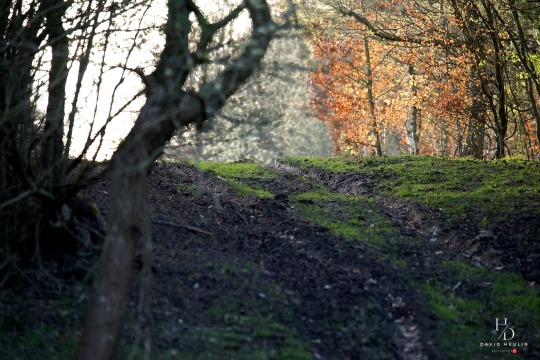
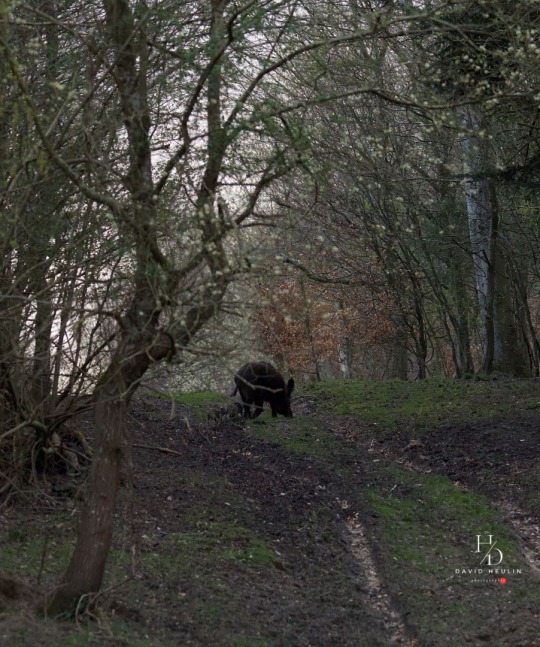
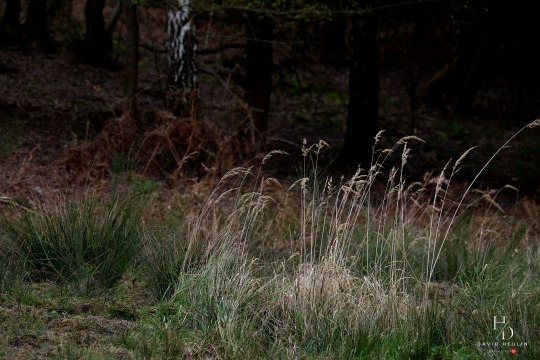
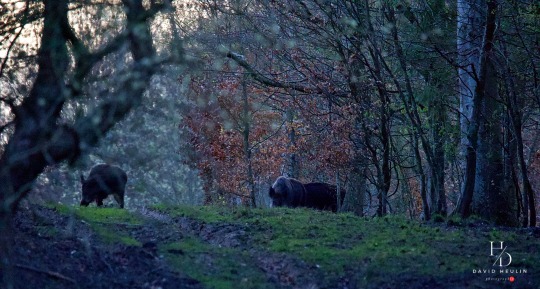
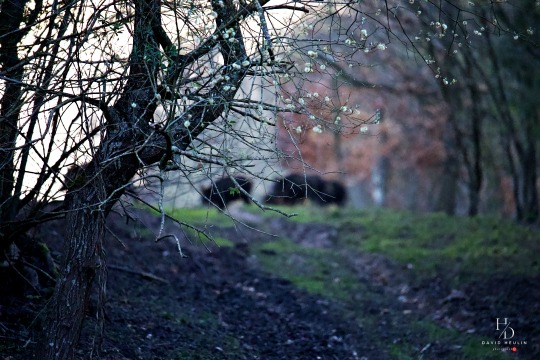


Ce soir, nous avions choisi de nous aventurer dans la mystérieuse forêt de bord. Connaissant bien le lieu, nous avions repéré un passage fréquenté par les sangliers. Tout ce qu'il nous restait à faire, c'était d'être patients. Nous nous sommes postés parmi les arbustes, le vent soufflant dans la bonne direction, nos vêtements de camouflage nous fondant parfaitement dans le paysage.
Et puis, comme prévu, la première visite est arrivée : une femelle sanglier accompagnée de ses marcassins, leurs rayures distinctes ornant leurs dos. Quel spectacle magnifique ! Nous avons observé ces belles créatures avec émerveillement, jusqu'à ce qu'un moment inattendu se présente : un sanglier se frottant contre un tronc d'arbre, grattant avec délice. C'était une scène magique, un instant où la nature nous a offert un spectacle authentique et gratuit.
Dans cet environnement envoûtant, nous nous sommes sentis parfaitement à notre place. Les murmures du vent à travers les feuilles, les oiseaux qui nous ont acceptés et sont venus chanter à quelques mètres de nous… Tout semblait être en harmonie. C'était un moment où nous nous sommes sentis pleinement connectés à la nature, reconnaissants pour ces instants précieux et privilégiés.
2 notes
·
View notes
Text

CLAUDE LALANNE & CLARICE LISPECTOR
A pesar del progreso el pueblo conservaba lugares casi desiertos, ya en la frontera con el campo. Esos lugares rápidamente tomaron el nombre de «paseos». Y también había personas que, invisibles en la vida pasada, adquirían ahora cierta importancia solo por negarse a los nuevos tiempos. La vieja Efigênia vivía a una hora de la Cancela. Cuando murió su marido continuó manteniendo el pequeño corral, sin querer mezclarse con el pecado naciente. Y aunque solo iba a la calle del Mercado para dejar las cántaras de leche, se había convertido un poco en la dueña de S. Geraldo. Se paraba junto a una tienda, con la mirada seca que parecía que no necesitase ver, le preguntaban riendo tímidamente cómo iban las cosas, como si ella pudiese saber más que los demás. Porque de la propia modernización de S. Geraldo había nacido un tímido deseo de espiritualidad, del cual la A. J. F. S. G. era uno de los resultados. Cuando Efigênia decía que se había despertado de madrugada lanzaba una gran inquietud sobre los comerciantes que, en su calidad de jefes, ya empezaban a decir: S. Geraldo necesita una dirección. Aunque la vida espiritual que vagamente atribuían a Efigênia se resumiese después de todo en el hecho de que ella no afirmaba ni negaba, en que no participaba ni siquiera de sí misma, hasta tal punto llegaba su austeridad. A ser callada y dura como les sucedía a las personas que nunca habían necesitado pensar. Mientras en S. Geraldo se empezaba a hablar mucho.
- Clarice Lispector, La ciudad sitiada. Traducción de Elena Losada. Siruela.
- Claude Lalanne terminando el primer Marcassin, 1964. Cortesía de Lalanne Estate
10 notes
·
View notes
Text


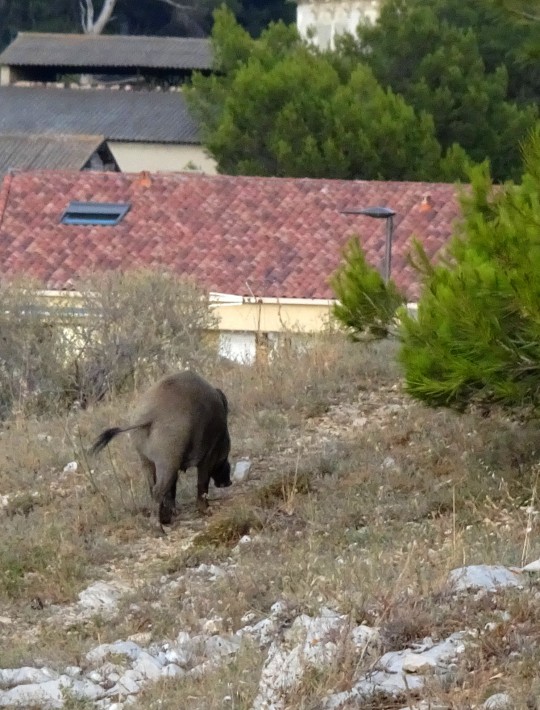
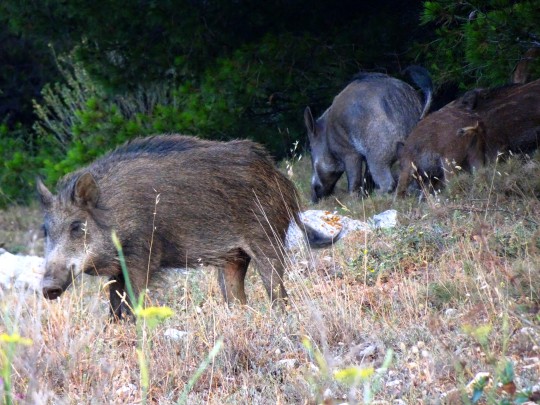

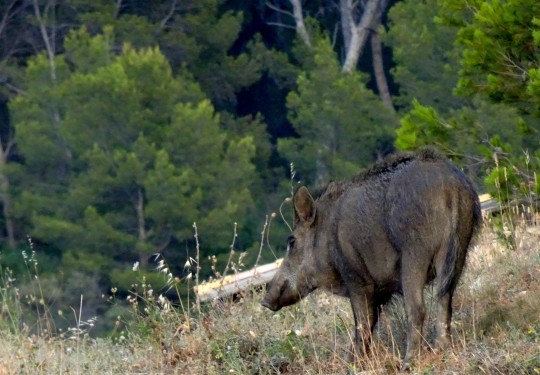


Je suis arrivé il y a peu à Marseille, pour l'été !
En revenant du Mont Rose, à la limite du Parc National des Calanques, je suis tombé nez à nez (ou plutôt nez à groin !) avec une harde de sangliers (Sus scrofa pour les intimes) en goguette !
Ils étaient au dessus du chemin, à une dizaine de mètres à peine !
Celui que je pense être le mâle (?? - 1ère photo) n'a jamais cessé de surveiller les promeneurs alors que les marcassins (enfin, le stade après, ils n'avaient quasiment plus leurs rayures horizontales) se baladaient tranquillement dans la garrigue !
Alors j'ai cherché chez mon amis Hans Gugl (google, quoi) et il semblerait qu'on les appelle alors des "bêtes rousses" . J'en connais d'autres !
#marseille#montredon#mont rose#parc national des calanques#sanglier#laie#marcassin#sus scrofa#bête rousse
5 notes
·
View notes
Text
11 août 2023, aprem

On trouve un cimetière pour remplir le réservoir d’eau, on fait des courses, on jette les poubelles qu’on doit trier à la main car ici ils font du tri, et… pas de gaz… on fait des détours, des magasins de matériaux, des campings… pas moyen… bon il se fait tard, on avisera demain.
La route est magnifique ! La Toscane est si belle… encore un peu et on reporterait encore l’arrivée chez nos amis tant les sentiers donnent envie ! La nature est sauvage, ça grouille de vie… on voit une horde de sanglier avec les marcassins, un renard, un geai magnifique… Mais on trop hâte de les voir, de voir leur nouvelle maison, la vie qu’ils se rêvent ici ! Et nous y voilà. Du parking je les aperçois sur le seuil de leur nouvelle vie et je fonds en larme… l’amour et le bonheur nous explosent le cœur…



2 notes
·
View notes
Text





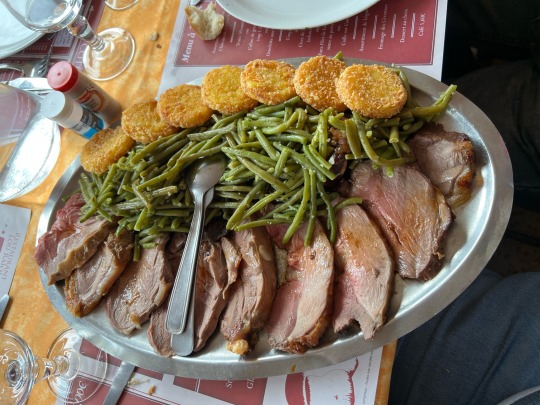




Restaurant Lou Raïol - Lozère
Pendedis, 48370 Saint-Germain-de-Calberte
Une très belle surprise une très bonne adresse pour un restaurant avec cuisine traditionnelle de grande qualité
Lou Raïol vous propose une cuisine traditionnelle et sans chichi avec des spécialité comme les cuisses de grenouilles, la truite meunière, l'omelette aux champignons, le coq au vin et civet de marcassin selon la saison.
Le col de Pendedis partagé sur 3 communes se situe au carrefour des routes départementales D13 et D54.
Le service est assuré en salle climatisée ou terrasse ombragée surplombant la vallée du Galeizon.
Menu de 11€ à 35€, carte, individuels et groupes.
Repas de groupe jusqu'à 150 personnes.
Le soir et grande table, sur réservation uniquement
Le restaurant accepte les tickets restaurant sauf le dimanche et les jours fériés.
Vente de produits régionaux
Équipement
Accès handicapés
Parking
Parking autocar
Terrasse
RESTAURANT LOU RAIOL 48370 COL DE PENDEDIS TEL .04.66.45.52.02 PORTABLE 06.60.90.05.55 EMAIL [email protected]
https://louraiol.skyrock.mobi/
#restaurant#original photographers#photography#photographers on tumblr#photographe#photo#france#villagedefrance#tourism#francephotography#tourisme#occitanie#restauro#restauration
3 notes
·
View notes
Text

Emeu - A la naissance, le poussin est revêtu d'un plumage rayé lui permettant de se camoufler dans l'herbe, à l'instar des marcassins.
Lieu : Parc d'Isle, Saint-Quentin
#photo#photo animalière#animals photography#animaux#animals#animaux sauvages#wild animals#oiseau#bird#émeu#emu#émeu d'australie#australian emu
0 notes
Text
Le sanglier Moïse
Le sanglier qui a traversé la mer pour accoucher. Enserrer, prise au piège des armées. Une laie a traversé l'Océan.
"Une laie gestante, qui fuyait peut-être une battue, a traversé l’océan Atlantique depuis le continent (environ 9 km) à la nage pour mettre bas loin de la civilisation, le 16 mars. Elle a donn�� naissance à trois petits marcassins. Des riverains, qui avaient repéré l’animal, se sont émus de cet heureux évènement. D’autres ont craint qu’il puisse proliférer voire engendrer des dégâts au niveau des habitations et jardins. Lundi 25 mars au soir, la femelle a été abattue avec ses petits par l'amicale de chasse locale." Elle fuyait les chasseurs, a repéré l'îlot promis, aux frontières d'eau, et les sangliers nagent-ils, elle a porté ces petits dans l'eau, ils ont senti l'eau sur leur mère, les courants, elle est arrivée et a donné naissance, qu'a-t'elle senti ? Puis elle est morte.
0 notes
Text

Buster Moon est un élégant koala qui dirige un grand théâtre, jadis illustre, mais aujourd’hui tombé en désuétude. Buster est un éternel optimiste, un peu bougon, qui aime son précieux théâtre au-delà de tout et serait prêt à tout pour le sauver. C’est alors qu’il trouve une chance en or pour redorer son blason tout en évitant la destruction de ses rêves et de toutes ses ambitions: une compétition mondiale de chant. Cinq candidats sont retenus pour ce défi: Une souris aussi séduisante que malhonnête, un jeune éléphant timide dévoré par le trac, une truie mère de famille débordée par ses 25 marcassins, un jeune gorille délinquant qui ne cherche qu’à échapper à sa famille, et une porc épic punk qui peine à se débarrasser de son petit ami à l’égo surdimensionné pour faire une carrière solo. Tout ce petit monde va venir chercher sur la scène de Buster l’opportunité qui pourra changer leur vie à jamais. (Résumé Allociné)
Les ficelles sont grosses mais le film est sympathique et se laisse regarder. C’est amusant de voir Buster accumuler les bourdes pour essayer de s’en sortir. J’ai beaucoup aimé Rosita, qui se sent invisible dans sa propre famille.
Le film est plein de bons sentiments et on sait où l’intrigue veut nous mener. Ca reste un film pour enfant.
La bande son est pas mal. Elle est rythmée et correspond aux personnages. L’animation propose quelques moments de féeries.
Même si ce n’est pas un coup de coeur, c’est un film divertissement qui fait passer un bon moment.
0 notes
Video
Madame et ses petits par Arnaud LAUGIER
Via Flickr :
Approche matinale (3 200 ISO le piqué prend un coup, surtout avec le téléconvertisseur), sachant qu'il manque encore une dizaine de marcassins sur la photo ! ;-) Dédicace à Stanislas ! Merci encore à toi ! A la prochaine, j'espère rapidement 😉
#sanglier#laie#marcassins#Sus#scrofa#ongulés#mammals#mammifères#mammalia#faune#fauna#nature#natura#natural#libre#sauvage#wild#wildlife#Sigma#120-300mm#f/2.8#Nikon#D5500#TCx1.4#summer#été#2017#animal#chemin#forest
0 notes
Text
La marque Le Gaulois : le pire de l'élevage, chats en Chine, marcassins,...
youtube
⚠️💘😈⚠️ À CONDAMNER LOURDEMENT SVP
1 note
·
View note
Text




Au menu, le marcassin de Philippe L😘! #délicedelachasse🍃#artdelatable🦆#porcelainedeGien🍁🕊🍂#withmyfriends🍽️🍷🌿#weekend🦌🌱🦔🌳🐿️🌱🕊#merci❤️
0 notes
Photo

{𝗖𝗵𝗲𝘇 𝗕𝗲𝗻𝗼î𝘁} Si vous me suivez depuis longtemps, vous savez que l'un des grands challenges de ma petite vie confortable est de trouver des cadeaux qui plaisent à mon amoureux. C'est son grand défaut: il n'a jamais besoin de rien, n'est pas attaché aux objets. Il aime les Lego, certes, mais notre appartement faisant 60m2, les limites spatiales sont rapidement atteintes. Alors j'essaie de lui offrir des "expériences", de lui créer de futurs beaux souvenirs, de trouver de jolis moments. Il y eut madame Foresti fin Novembre, un déjeuner chez Benoît, le bistrot de M. Ducasse, il y a quelques jours. M. Papillon est adorable: c'est toujours avec moi qu'il partage ses spectacles et ses repas, alors qu'il pourrait très bien y aller avec une ou un ami, l'une de ses sœurs. C'était très très chouette "Chez Benoît", ce bistrot ouvert il y a 100 ans à deux pas de la tour Saint-Jacques. On a un peu l'impression d'entrer dans une carte postale tant le décor est soigné, joliment rétro, lieu parfait où faire un petit voyage dans le temps ou dans un vieux film au Paris fantasmé. Plus bistrot et plus parisien est difficile à trouver. Aux manettes de la belle cuisine traditionnelle, une jeune femme: Kelly Jolivet. Vous me connaissez, pour moi (pour nous!), ça compte et la cheffe est douée. Le reste de l'équipe est très jeune également. Attentive, gentille, présente juste ce qu'il faut. Nous nous sommes régalés, avons passé un moment délicieux en dépit de la tablée de barbares gaspilleurs bruyants de installés à côté de nous. A notre menu: poireaux vinaigrette, terrine de marcassins ; boudin noir aux deux pommes, soufflé au fromage puis millefeuille et savarin à l'armagnac. Le Savennière que nous avons bu avec notre repas était délicieux, et je ne suis toujours pas remise des pralinés (signés Ducasse) et des guimauves à la pistache servis avec le café. #paris #restaurant #frenchcuisine #alainducasse #chezbenoit #kellyjolivet #parisisalwaysagoodidea #ipreview via @preview.app (à Benoit Paris) https://www.instagram.com/p/CnAbn4YME1g/?igshid=NGJjMDIxMWI=
#paris#restaurant#frenchcuisine#alainducasse#chezbenoit#kellyjolivet#parisisalwaysagoodidea#ipreview
0 notes
Photo







「Le Marcassin」
去る4/3は14回目の結婚記念日ということで
家族で食事に行ってきた
中学生以上限定ということでなかなか行かれなかった
近所で有名なフレンチに
少しフライングだけど
ようやく来週中学生になる子供を連れて行ってみた
ビストロとバールの中間を行くような
絶妙で��味しい料理とワインに完全にやられた
これは確かに子供は無理だと言いながら
我が子はその雰囲気とツマミ感覚の
料理を楽しんでいた
末恐ろしいというか、何とも末が楽しみである
8 notes
·
View notes